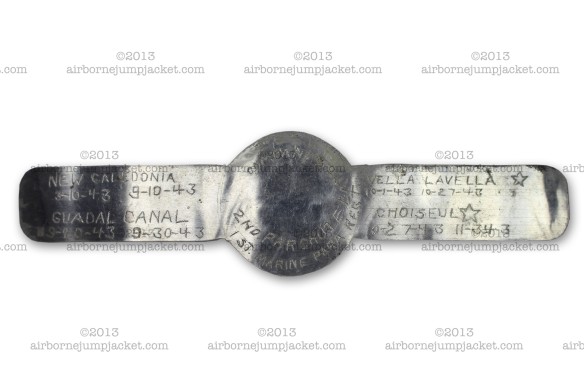 This D-Day Purple Heart grouping is an excellent example of how research can make the history behind these artifacts come alive. I was contacted by the daughter of this Veteran who said that she had this Purple Heart and some photos of her father. She did not have much info regarding his service. She did know that he had retired as a Lieutenant Colonel and she thought he had been wounded in Normandy.
This D-Day Purple Heart grouping is an excellent example of how research can make the history behind these artifacts come alive. I was contacted by the daughter of this Veteran who said that she had this Purple Heart and some photos of her father. She did not have much info regarding his service. She did know that he had retired as a Lieutenant Colonel and she thought he had been wounded in Normandy.
I talked with her for awhile and learned that her parents had got a divorce when she was very young. Her father had remarried and moved away from the area. She told me that because of this, they had not been very close. She also mentioned that he unfortunately had passed away many years ago. She said that this medal had just been sitting in a drawer for years and she did not know what to do with it. She thought it was important for it to go to someone who would appreciate it and take care of it. Thus, she decided to entrust it to me.
After I acquired the medal, I started researching it. Initially, I did not have a lot to go on. I had some basic info like his name, birth date, and where he lived prior to going into the service. Unfortunately, his first and last names where very common names in that period. This made it much harder to find anything as I had to sift through hundreds of people who had similar names during WWII. It took a while, but I started to piece together the history of this Veteran and how he acquired this Purple Heart.
I had a bit of luck and found a series of newspaper articles from his hometown newspaper. Even after he moved away from the town, they continued to write articles about him for several decades after he had left, because his mother and other family members still lived there. Those articles had photos of him, so I was able to compare those photos with the ones I got from the daughter and positively confirm that I had the right match.
Through the newspaper articles I learned the story behind this Purple Heart. He had been an officer in the famed US First Infantry Division, also referred to as the Big Red One, during WWII. He was wounded on Omaha Beach on D-Day, June 6, 1944, while serving with them. This Purple Heart was awarded to him for that wound. Luckily, he later recovered from his wound and continued to serve with the First Infantry Division for the rest of World War Two. He eventually was given command of one of the battalions of the 16th Infantry Regiment, which was part of the First Division. After the war, he stayed in the military and had a distinguished career. He retired as a Lieutenant Colonel in the early 1960s.
Although it is hard to see in the photos, the medal itself is an earlier Purple Heart with the number on the rim of the medal. In the two photos pictured, he is pictured in uniform after the War in the studio photo on the left. In the photo on the right, he is the furthest officer on the right of the photo.
A couple of things are interesting about the photo on the right. It was taken in March 1944, just prior to D-Day. He is wearing what appear to be paratrooper jump boots. Also, for a jacket, he is wearing what we military collectors commonly refer to today as tanker jackets because of their use by members of the armored forces during WWII. Both jump boots and tanker jackets were very popular with regular infantry officers during WWII, who seemed to acquire them when ever possible.
- First Infantry Division D-Day Purple Heart Medal
- 1st Infantry Division Purple Heart Back
- First Infantry Division D-Day Medal Grouping Photos











You must be logged in to post a comment.